The Nomadic Designer: Tips And Tricks To Work On The Road
Have you ever wondered what it would be like to travel the world while working as a designer? It might sound like a dream, but all that glitters is not gold, and it might not be the right choice for you. In this article, I’ll share some insights from my four years of travel and work that hopefully will be useful for anyone willing to try a nomadic lifestyle, too.
When I wrote the first draft of this article, I was in London, after a long trip to Asia. Now, I’m making changes to it in Mexico, before going to Argentina to visit my family. Changing countries often has become an important part of my life as a designer; and, curiously, it all happened by accident.
I once heard that, while at the office, you should stand up from your desk, stretch your legs, leave the building and never come back. That’s exactly what I did when I was living in Barcelona in March 2014. At the time, I was working for a big company on a project that I didn’t enjoy, and was participating in meetings with people I didn’t know. Sounds like fun, doesn’t it?
Looking back, I see that quitting a stable job to jump into the void of a traveling life was one of the scariest moments of my life. I was going to start a trip to South America, doing design workshops and lectures that would provide me with income to sustain my journey — but in reality, I had no idea what I was doing. Without knowing it, I was becoming a nomadic designer.
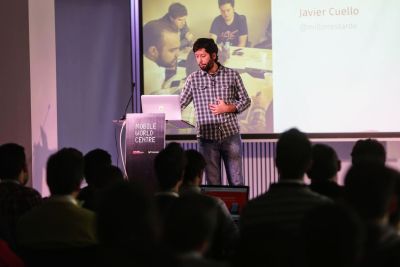
When that six-month trip ended and I went back to Barcelona, I was never able to settle again. So, what did I do? Of course, I kept traveling! Four years and 60 countries later, I’m still on it.
And I am not alone. I’d like to quote Vitaly Friedman (founder and long-time editor in chief of Smashing Magazine), who once said:
“There is nothing more liberating and sentimental than the sound of a closing door that you will never open again. As memories are flowing by, you turn your back from that door, you hold your breath for just a second and you walk away. At that point you almost sense the change in the wind flowing by. You let go; and knowing and feeling this change is an incredibly empowering, intoxicating experience.”
If this sounds appealing, and you would like to try it for yourself, I hope my article will help you get started. Please note, however, that I’m not going to give you a “how to” guide, with step-by-step instructions that will work for everyone. Instead, I’ll share some insights from my personal experience.
Whatever People Think It Is, It Is Not That
When I tell someone that I’m constantly traveling, usually the person looks amazed. Most of the time, their first question is, “How can you afford to live like that?” I sometimes joke, saying I’m a millionaire with plenty of free time, but it’s not only because of this that I suspect they get the wrong idea about “working and traveling.” Perhaps, some of them imagine plenty of beaches and a lot of comfort and freedom.
Well, guess what? Working from a beach is not that fun or convenient. Or, as Preston Lee puts it, “Freelancing is not sitting on the beach, sipping margaritas, and reading books by Tim Ferriss.”
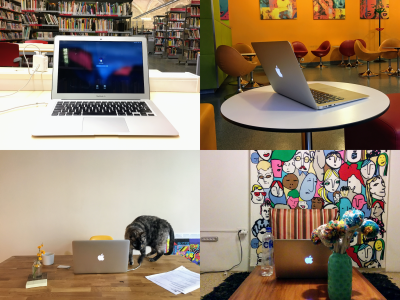
But the part about having a lot of freedom is true. I do have a lot of freedom and flexibility — like any other freelancer — with the bonus that I get to know different places, people, cultures and cuisines. The perks of such a lifestyle outweigh the difficulties, but at the same time, not everyone would be willing to handle it.
Today, the “digital nomad” hype is all around, with a lot of people publishing e-books, videos and blog posts selling an ideal lifestyle that’s apparently perfect. Of course, some things are often left out — things like getting tired of packing again and again, being away from family and friends, and starting over often. That’s why people might have a unrealistic idea of what all this is about.
In case you are considering trying something similar, it might help to be aware of some personal characteristics that would be helpful to have.
Comfort With Being Alone
Being a solo traveler allows me to make my own decisions and be wherever I want, whenever I want. I spend a lot of time by myself (luckily, I get along well with myself). Even though it’s fine for me, I know it’s not for everybody. Loneliness is easy to solve, though. Coworking spaces, hostels, couchsurfing hangouts and Meetup are great places when you feel like you need some company and want to meet new friends.
Being Able To Adapt To New Contexts Easily
On a rough average, I move from one place to another every four days. This is very tiring, because every time I switch cities, I have to repeat the same process: book transportation and accommodation, pack my stuff, figure out how to get around, check the weather and find out about the cost of living. Ideally, you won’t be moving that often, but you should be able to grab your things quickly and move to a new place that better meets your expectations.
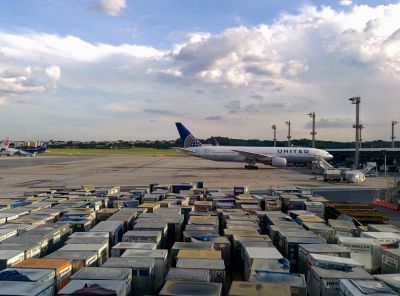
In some cases, you could plan to stay three or four months in the same spot, but the reality is that you will never know how you’ll feel until you get there. So, my advice is: Go little by little, especially at the beginning.
Flexible But Organized
I think I’ve never been as organized as I’ve been since I started traveling. Apart from the tools that I normally use to generate invoices, track payments and manage projects as a freelance designer, I also have several spreadsheets to organize my flights, accommodation and daily expenses.
The spreadsheet for expenses is divided into different categories and organized by day. I put in there all the money that goes out, so that I know exactly what’s happening, and how close I am to reaching my daily budget. I know there are some apps for this, but so far I haven’t felt comfortable with any of them. The key here is not to cheat (just write down everything) and to be consistent (do it every day) — this will give you good insight into how you are spending your money on the road. Then, it will be easier for you to make decisions based on the data gathered — for example, you could stop buying expensive cocktails so much.
Before Packing: Find A Remote-Friendly Job
If you’ve decided to give it a try, then, as a minimum, plan your start, and don’t leave home without at least one or two months of contracted work. This will keep you busy for the first part of your trip, so you’ll only have to worry about settling in a new place.
When I went to South America at the very beginning of my new life, I contacted several design organizations, schools and agencies that could help me organize design workshops and lectures in different countries. I did this because, a few months before leaving, I, along with a friend (¡hola José!) self-published a book that gained some popularity among designers in Latin America, and I was willing to teach its contents and show how to put them into practice. Doing things like that provided me with at least some idea of dates and an approximate income, while leaving other things to improvisation.
In my case, I’ve always liked being a freelancer, so I give myself a bit more flexibility in managing my schedule. One of the last projects I worked on was for a team in Barcelona and in which the words “remote” and “freelance” were clear in our agreement from the very beginning. This is what allowed me to keep going from country to country, splitting my time between work and getting to know new places and people.
Just so you know how “glamorous” this way of working is, at the beginning of this project I tried to hide my background during video calls or said that I couldn’t turn video on, because I was a bit embarrassed. By the end, though, my teammates didn’t care about that, and so later on, usually the first question of a video call was to ask me for a tour of the place I was staying at, to everyone’s amusement.
Of course, freelancing is not the only way. Working at a remote-friendly company could also be a good option for you. While you’ll lose some of the freedom to move around, if you plan to stay longer in places, then this could be the way to go: Hubspot, Basecamp, Bohemian Coding (of Sketch fame) and Automattic are some examples of companies that successfully work with designers and developers remotely, and there are many more.
A few websites list remote positions for design, so be sure to check them often: We Work Remotely, Remote OK, Working Nomads and Designer News — to name just some of them.
Regardless of whether you are freelancing or working for someone else, I have to say that face to face contact with members of your team is necessary from time to time to time, especially when planning meetings at the beginning of a project, when things are not all that clear. This will partly determine the location you choose, so best to pick a place that allows you to conveniently go where your team is based when needed.
Choosing Your Next Destination
After finding work that allows you to be on the move, the next big thing is to decide where to base yourself. The good thing is that you can work from any place with a decent Internet connection and easy access to coffee (which is essential).
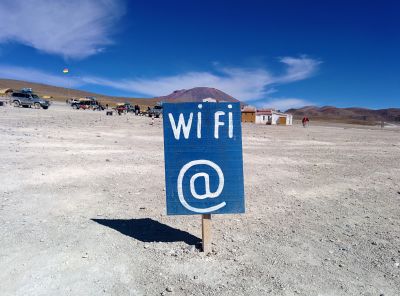
So far, I’ve been in 60 countries, more or less. Many of them were in Europe, where it is easy to move from one place to another and where you can sometimes cross countries without even noticing. (True story: I once missed a whole country because I fell asleep on the train.)
When choosing where to go next, keep in mind the following.
Reliable Access To Internet
You’ll never know how good the Internet connection is until you get there, but at least you can research which countries have the best and worst. This is important. Even if you’re tempted to spend a few days in the middle of a forest, if there is no access to Internet, it will probably be a no-go.
Time Zones
Choose a place where you’ll be in the same time zone with the rest of your team, or maybe a couple of hours ahead or behind. You’ll thank me when you have to schedule your first online meeting and it’s not 4:00 am.
Work Facilities
I’ve said that I can work from almost anywhere, but I have to make sure that my next destination at least has some good coffee shops, libraries or coworking spaces. You could also work from your hostel, hotel or rented flat, but then you’d have to make sure it’s a proper environment to work in.
Design Ecosystem
It’s always good to be surrounded by like-minded people, so many times before going somewhere, I’ll check whether there’s a designer, a design studio or a meetup where I could visit and get in touch with others. Luckily, some people are always willing to meet new pals, and they’ll give you good insight into how the local design community works. You can exchange and share tools of the trade, and you can make new friends as well.
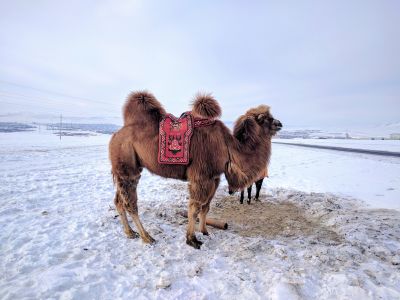
In my case, sending some emails in advance enabled me to meet such talented people as Michael Flarup in Copenhagen and Sacha Greif in Osaka. Just don’t be afraid to ask if you can drop by for a short visit!
Besides that, other factors are at play when you’re deciding where to go: affordability, transportation, safety, weather, etc. Fortunately, Nomad List rounds up the “best” cities,, which you can use as a reference when choosing where to head to next.
Of course, sooner or later, you’ll make some mistake. I’ve learned the hard way that planning where to work is indeed important. I once had to take a few unintended days off when I took the Trans-Siberian train to go from St. Petersburg to Beijing via Mongolia. At some point, the temperatures in the middle of Siberia were so low — the worst day was -50º Celsius — that my phones’ batteries suddenly drained — and being lost in the middle of a snowy small town is anything but fun. (The Russians there thought I was crazy for traveling during winter, and I now know they were right. But if you are like me and go there during wintertime anyway, always keep a paper copy of directions and important information, and bring warm boots and a pocket-sized bottle of vodka.)
Packing And Gear
If you already have a job and know where you are heading to, then you are ready to pack! Someone once said that before starting a trip, you should take half the things you plan to carry and double the money you have budgeted. While the last thing is not always an option, packing light is doable! You’ll thank me when you find your accommodation is uphill.
I started traveling with a 50-liter backpack for my personal things, and a smaller one for work-related items that I carry separately. After some time, I switched the smaller one for a daypack that I can roll up and put into the big one when I don’t need it. Everything (including the laptop) weighs 10 kilograms or so, but I keep assessing what else can I take off in order to have fewer things to carry. Similarly to when working on a design, try to get rid of the unnecessary.
For my work, I chose a MacBook Air because I knew I was going to travel a lot, and I wanted something lightweight and compact. Even though it’s a bit old now, it’s been enough for my requirements so far. I also carry two phones (iPhone and Android, with their corresponding chargers) because I do a lot of UX design for mobile and I often need to test on different devices.
I do have more gadgets and stuff, of course. I carry a remote to control my slides (for conferences and workshops), all kinds of adaptors, and noise-cancelling headphones (very useful for when you travel by train or plane.) But, in general, it is a good idea not to over-buy in advance, and pick up items only when you need them.
Where To Work
I have worked in all kinds of places: buses, trains, coffee shops, airport lounges, libraries, shared rooms in hostels, private rooms in hotels — sometimes anywhere I can set my laptop horizontally… or kind of. I’ve even gotten used to not using a mouse at all, because there is not always a place to put it next to my laptop.
Chances are the room where you stay is also going to be where you will work, so choose carefully. Airbnb is now pretty much widespread, so renting your own room with a desk should be enough — but be sure to mark “laptop friendly” in the search filters.
I try to keep a low budget, so most of the time I stay in a hostel. After a bit of training, I’ve learned to identify places that look better for work — like ones with spacious common areas — just by looking at the pictures. Of course, “party hostels” are not an option if you want to get work done, so if you see a lot of people having fun on the property’s website, that’s a red flag.
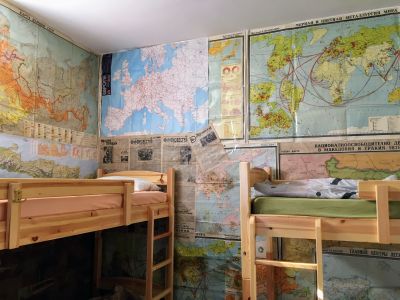
One of the main problems is that you never know how good the Internet connection will be. So, if you have difficulty with the Wi-Fi at your hostel, go to a coffee shop, coworking space or even a public library. (Interestingly, public libraries are where I’m most productive, perhaps because of the silence and the fact that I cannot make calls or participate in online meetings.)
Tip: More than once, I’ve visited a coworking space and offered to give a free design lecture to members in exchange of a few days’ worth of using a desk. It’s also nice because afterwards people will know who you are and will approach you openly to share ideas! Feel free to try it yourself.
Finally, a couple of websites could be useful when you’re looking for a place to work — namely, Workfrom and Places to Work.
Things To Keep In Mind When Living On The Road
A few things are important for any traveling designer but are too complex to address completely in one article, so I’ll just briefly mention a few of them, in the hope that it will still be useful.
Please keep in mind that everybody’s situation is different. There’s no one-size-fits-all answer, so you might have to adapt the following to your case.
Taxes
What is convenient for you will depend on your case, and it’s difficult to advise on what’s best, so be aware of the legislation of your home country and of the country where you plan to work. I’ve also been exploring the possibilities that Estonia is offering with its e-citizenship. I’m already an Estonian e-resident, but I haven’t done anything practical with this as of yet.
Managing Your Finances
Besides keeping spreadsheets for expenses, one thing that I discovered (perhaps too late) is that it is normally far more convenient to create an account in an app such as Monzo or Revolut (and there are plenty of others, like N26), so that, when making withdrawals, you pay fewer fees and get better exchange rates. This is especially useful in places where credit or debit cards are not normal; this way, you can also avoid the excessive fees that traditional banks often charge.
Also, check the exchange rate of your home currency before arriving at your next destination. In some cases, I’ve arrived in a new country and bought a very expensive coffee because I didn’t do my homework beforehand. One app I use to avoid situations like this is Currency, an elegant and simple currency converter.
Visas
The situation will depend on where you’re from and where you’re going, so check well in advance regarding the requirements for the passport you are holding.
Something useful I learned when applying for a visa that requires a tentative itinerary is to book hostels and planes that you can later on cancel for free, and print out and bring those booking confirmations.
Health And Insurance
Plenty of companies offer health insurance for travel, so I cannot recommend any one of them. The only thing I can advise is not to leave home without it. An accident in a foreign country, besides being annoying, could also be very expensive. So, prepare in advance.
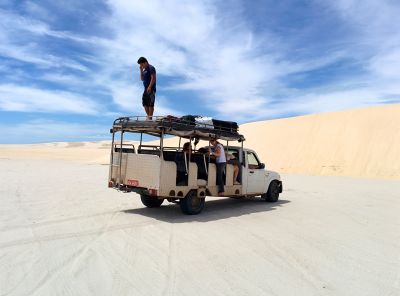
Getting Connected
What I normally do is buy a prepaid SIM card in each country I stay, with a data plan that will be enough for my stay there. I do a bit of research beforehand to see which carrier has the most widespread coverage, and I check if there’s any information in English on their website to make recharges when necessary.
A SIM card is more necessary in some countries than in others. For example, in Russia, most open Wi-Fi networks require you to fill in a phone number, to which a validation code will be sent, before you are able to use the network. Japan, on the other hand, is full of convenience stores with free internet (such as 7-Eleven), so a SIM card is not so necessary. Meanwhile, Europe now has a more convenient way to handling roaming, called “Roam like at home”, and getting a new SIM card in every country is not so necessary anymore.
In any case, before buying a SIM card, make sure it will work across the country, especially if the country is large with many different regions. Another important thing to check beforehand: Will your current phone number work in the new country? Luckily, there’s a website where you can check that information.
Preparing To Be Offline
Moving from one place to another involves a lot of time spent on the road, and in some cases you won’t have the chance to find Wi-Fi or good data network coverage. At these times, Spotify and Netflix are my best friends, because both allow me to download music and TV shows, respectively, so I can use them without an Internet connection. This was especially useful when I had to take several connecting trains to cross Siberia, spending in some cases around 30 hours straight in a railroad car before my next stop.

For the same reason, I always download a map of my next destination, using Google Maps (Maps.me has the same functionality).
If you want more information of this kind, check out another article I wrote, with more travel hacks and tips from my years of traveling.
Final Thoughts
Before I board my next train, let me tell you that becoming a nomadic freelance designer is by far one of my best decisions of my life so far. I have the flexibility that any freelancer has, but I also meet new people and see new places all the time. And it’s not as expensive as you might think. If you control your budget, traveling could be cheaper than living in a big city. So, I can afford to work four to five hours every day, and I use the rest of the time to get to know the place I’m visiting, to work on personal projects and to write articles for Smashing Magazine.
Traveling also makes it a bit hard to separate pleasure from work, because everything seems more enjoyable when you’re moving around. I’ve had to remind myself sometimes that I’m not on a vacation and to focus on getting things done. After a while, though, I’ve found a good balance. Now, I allow myself some moments to just move around, travel and enjoy the ride, doing nothing. It’s not all about work, after all!
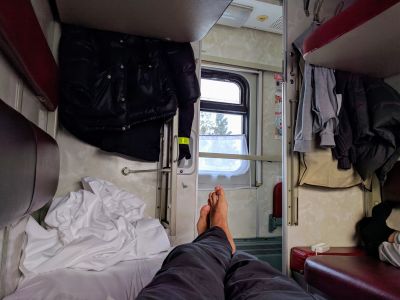
Living like this is sometimes challenging and tiring, but I find it much richer than being in an office Monday to Friday, 9:00 to 5:00. And with all of the current technology, it’s easy for any designer to embrace this lifestyle. The most difficult part is finding a job to sustain your travel, but once you’ve found it, the next part is just to let it flow.
The nomadic lifestyle is not right for everyone, but the only way to know for sure is to try. Neale Donald Walsch once said that life starts where your comfort zone ends, and I completely agree. If you can afford to take the risk, go for it and enjoy a part of life that might not last long but will give you a life-changing experience, teach you new things and change the way you see the world forever.
If, for some reason, it doesn’t work, you can always go back to your previous life, right? Whether you are ready to give it a try or still have some questions about it, feel free to let me know. I’ll do my best to help you out. See you on the road!
Other Resources
- “Nomadic Designers,” Medium
- “ANYWHERE,” AND CO (free ebook)
- “Coworking Spaces Around The World,” Gemma Church, Smashing Magazine
- “How I Chose a City to Optimize My Creative Output,” David Kadavy, Medium
- “My Name Is Vitaly, and I Am Homeless,” Vitaly Friedman, The Pastry Box Project
Further Reading
- Recovering Deleted Files From Your Git Working Tree
- Top Front-End Tools Of 2023
- How To Become A Better Speaker At Conferences
- What I Wish I Knew About Working In Development Right Out Of School








